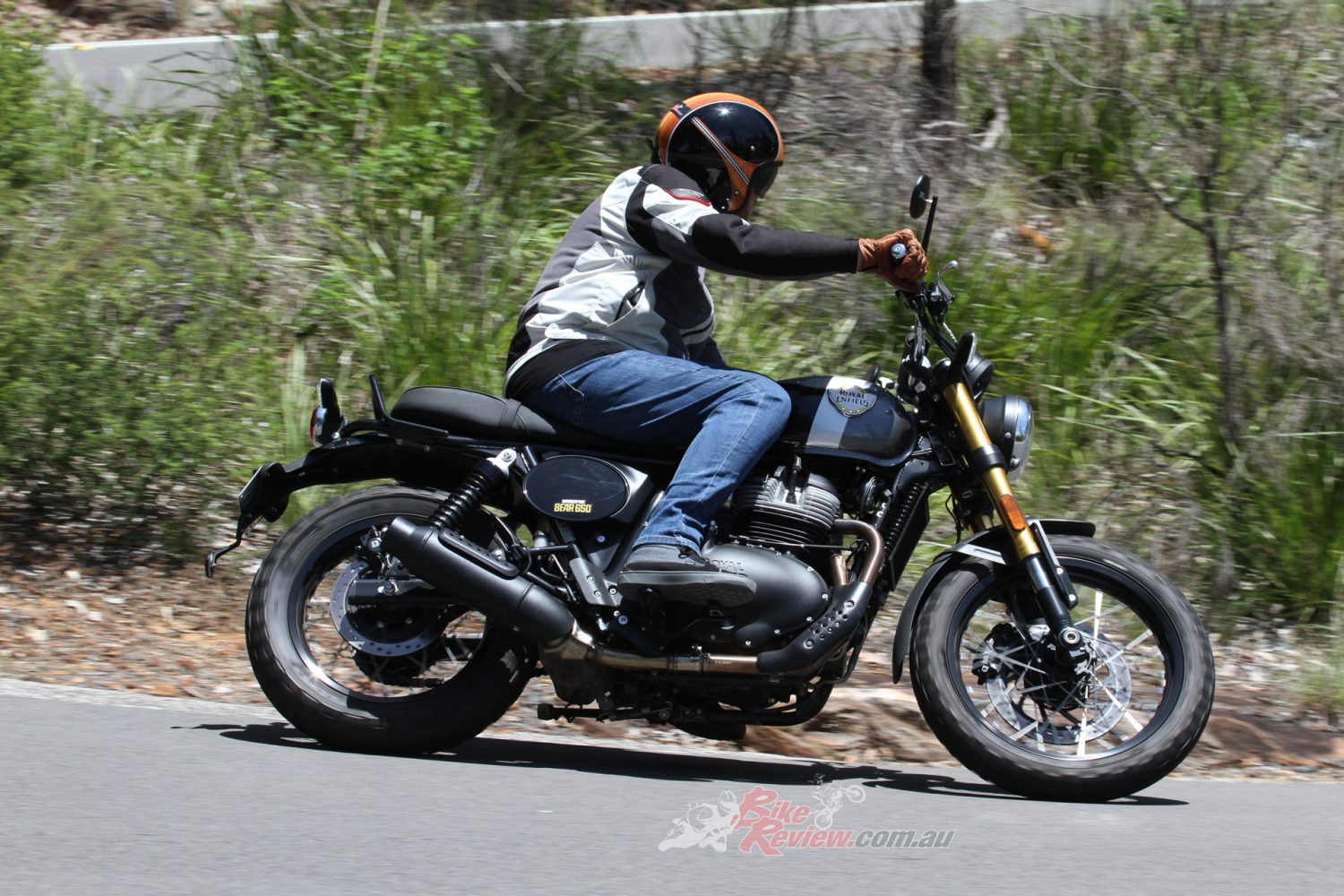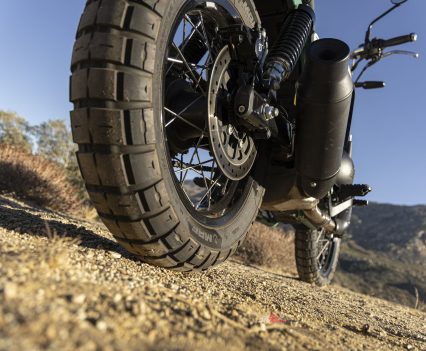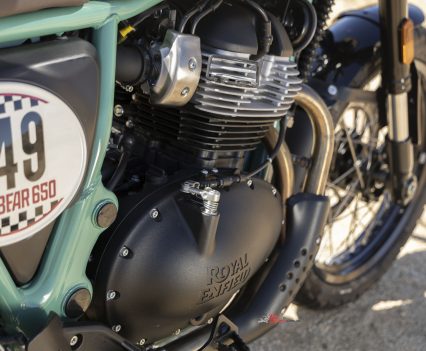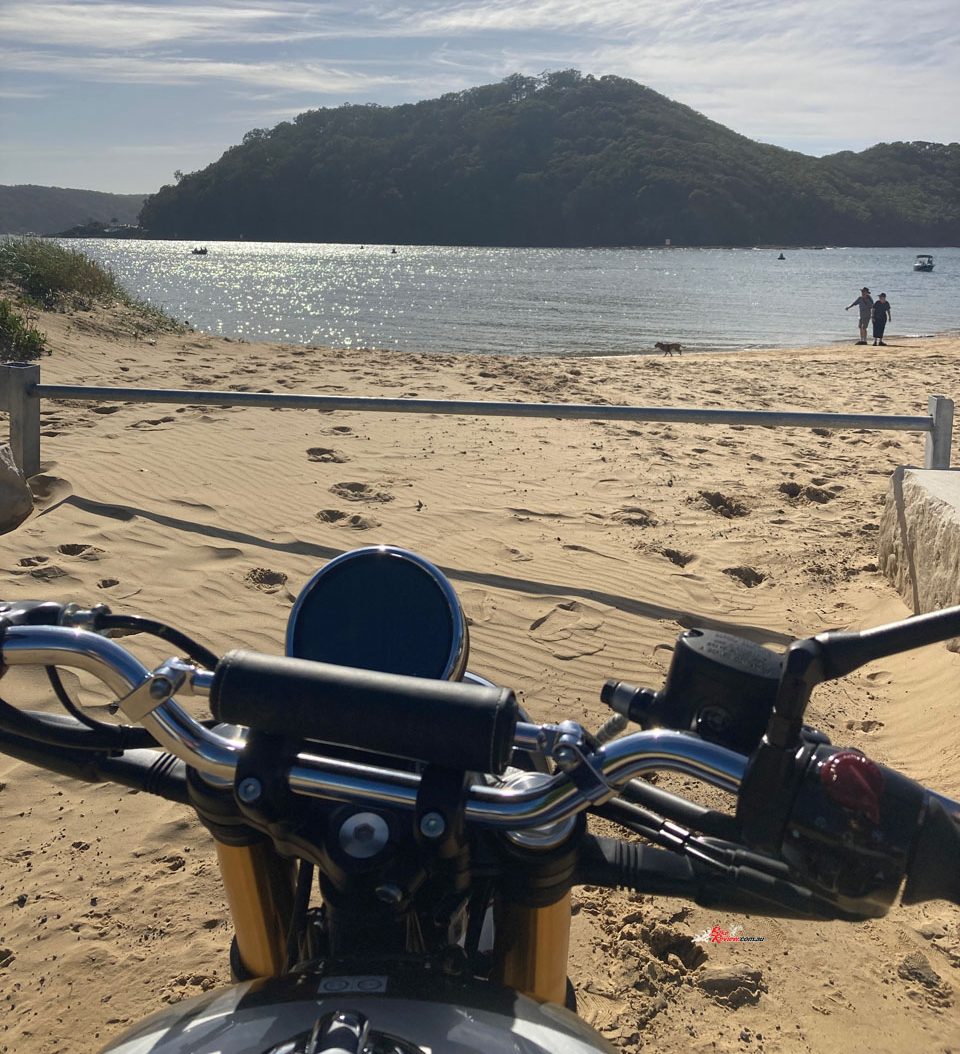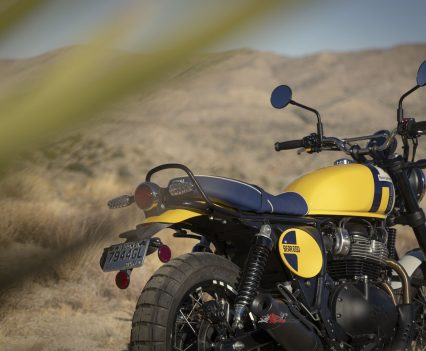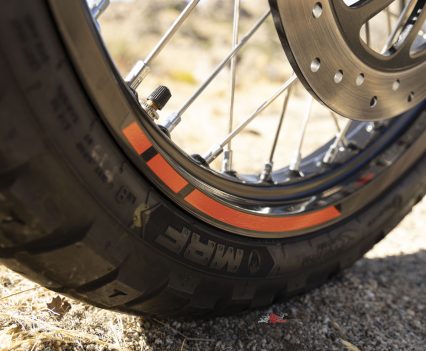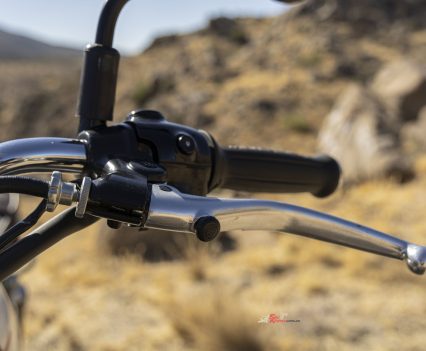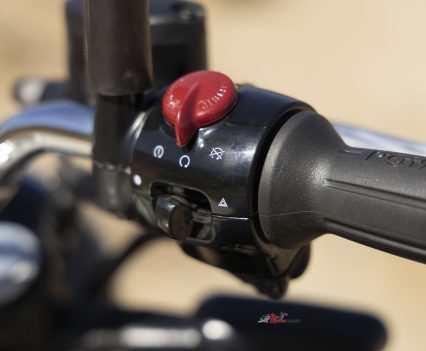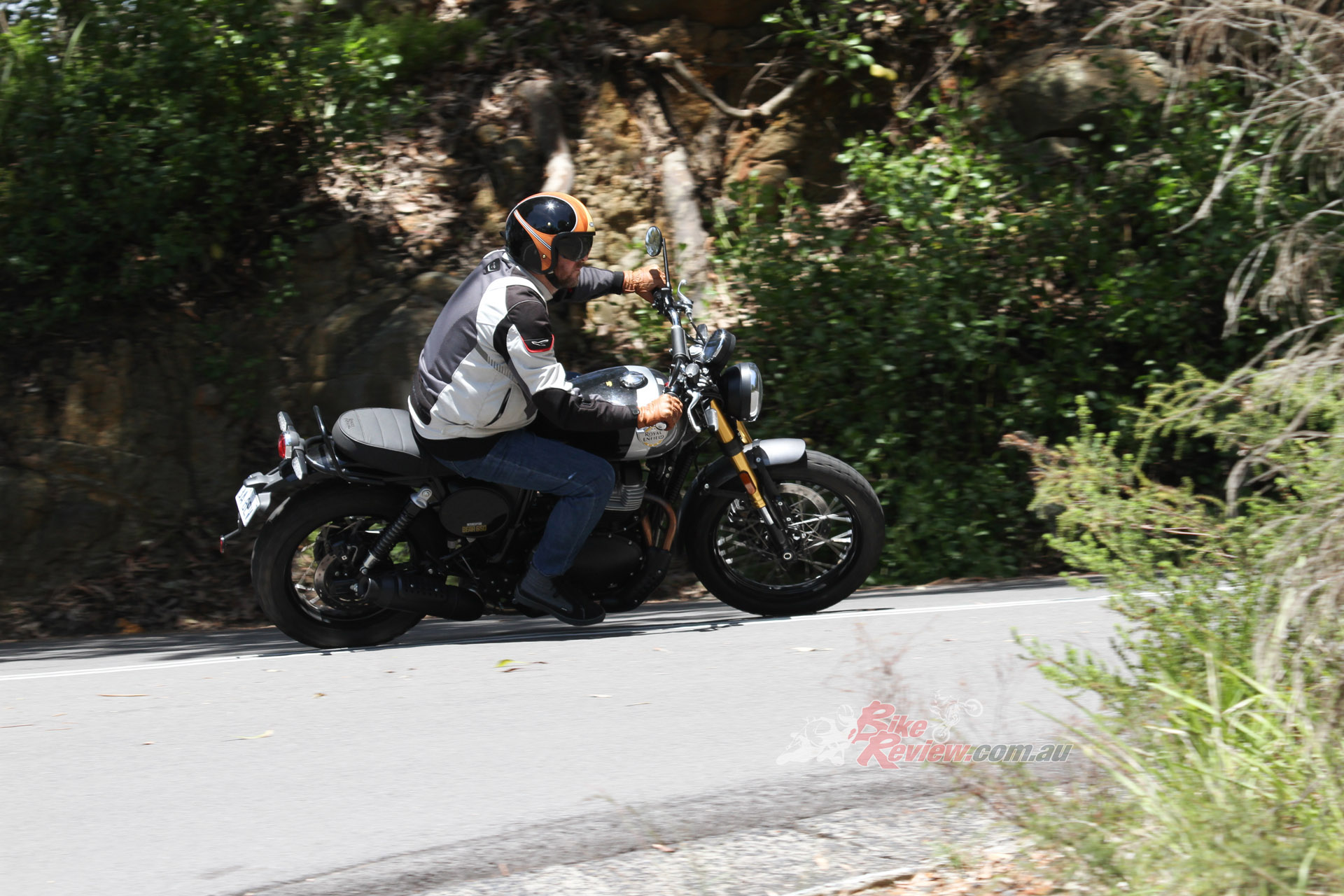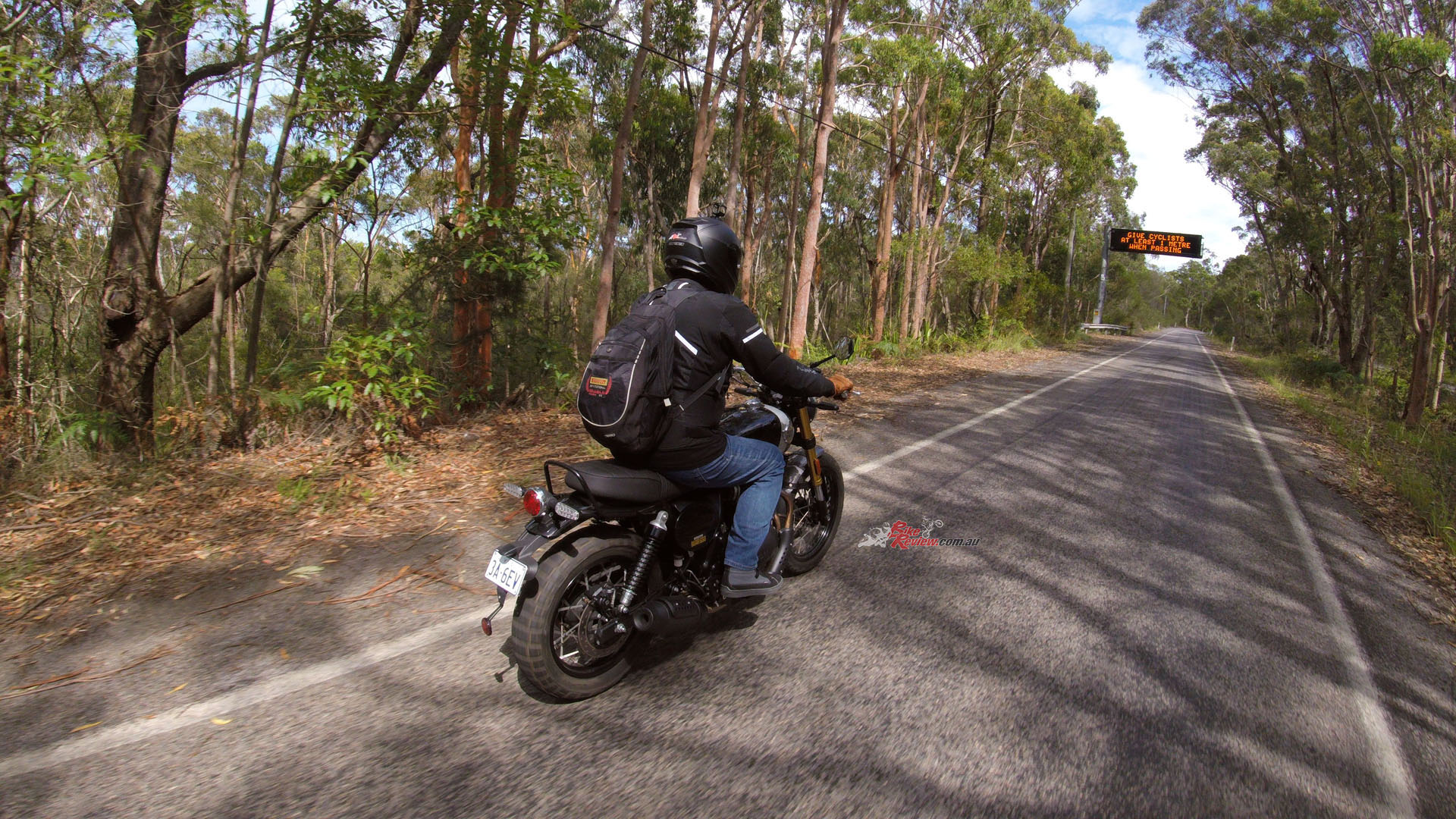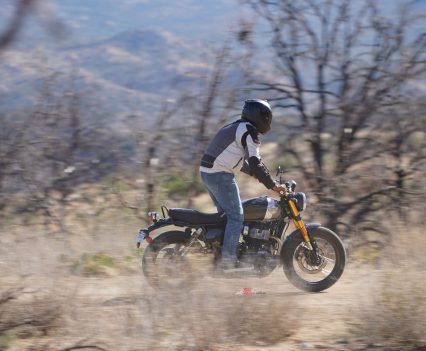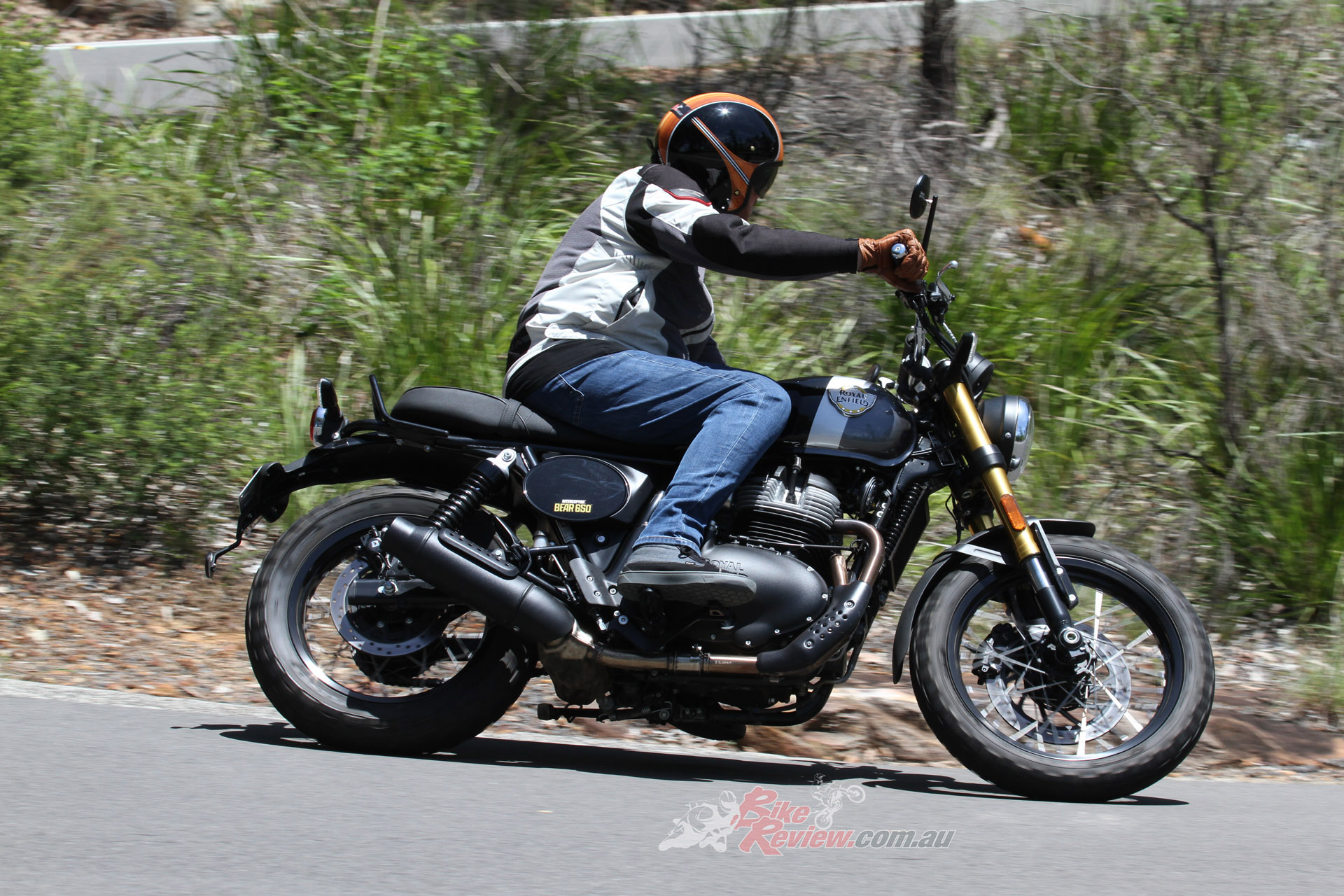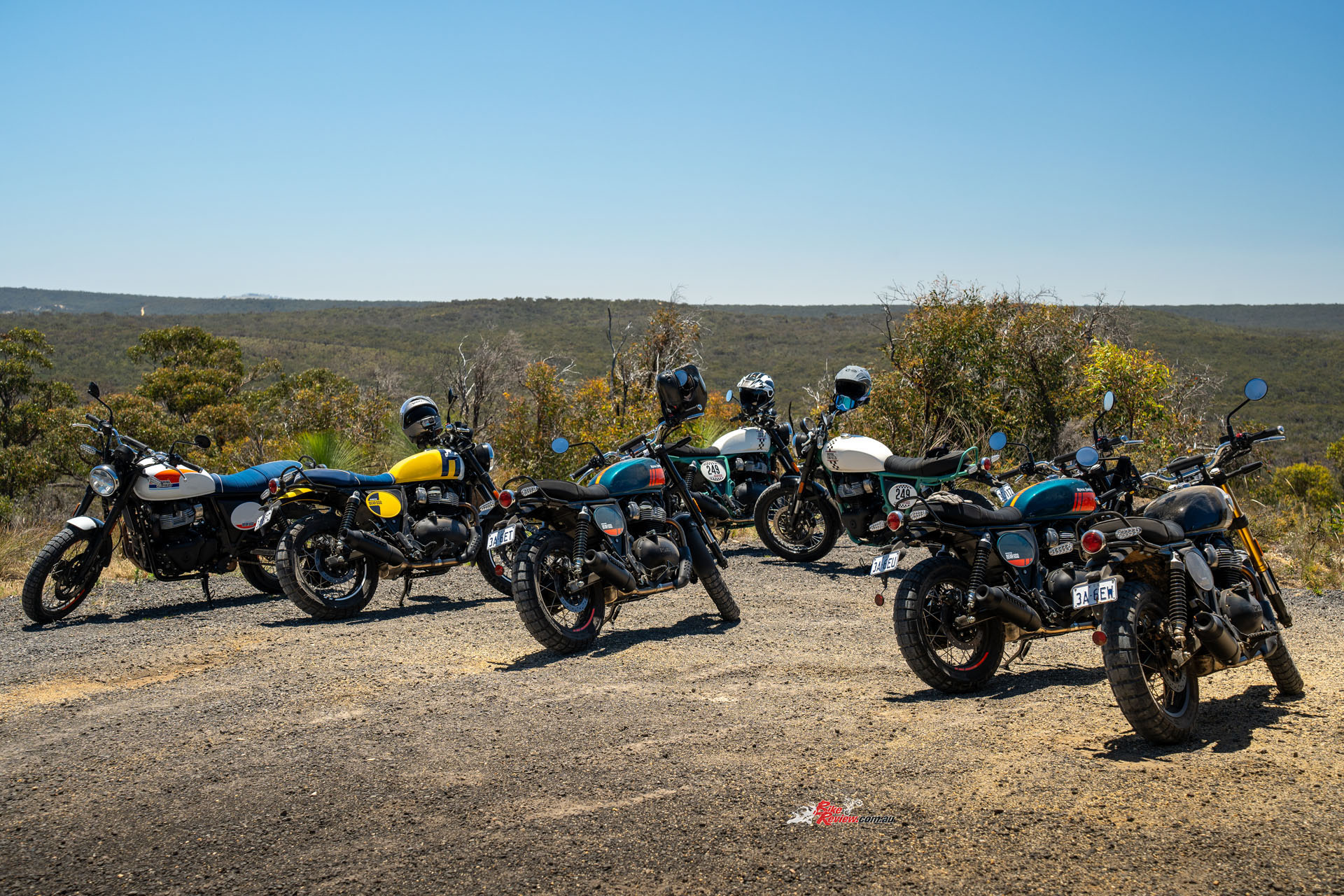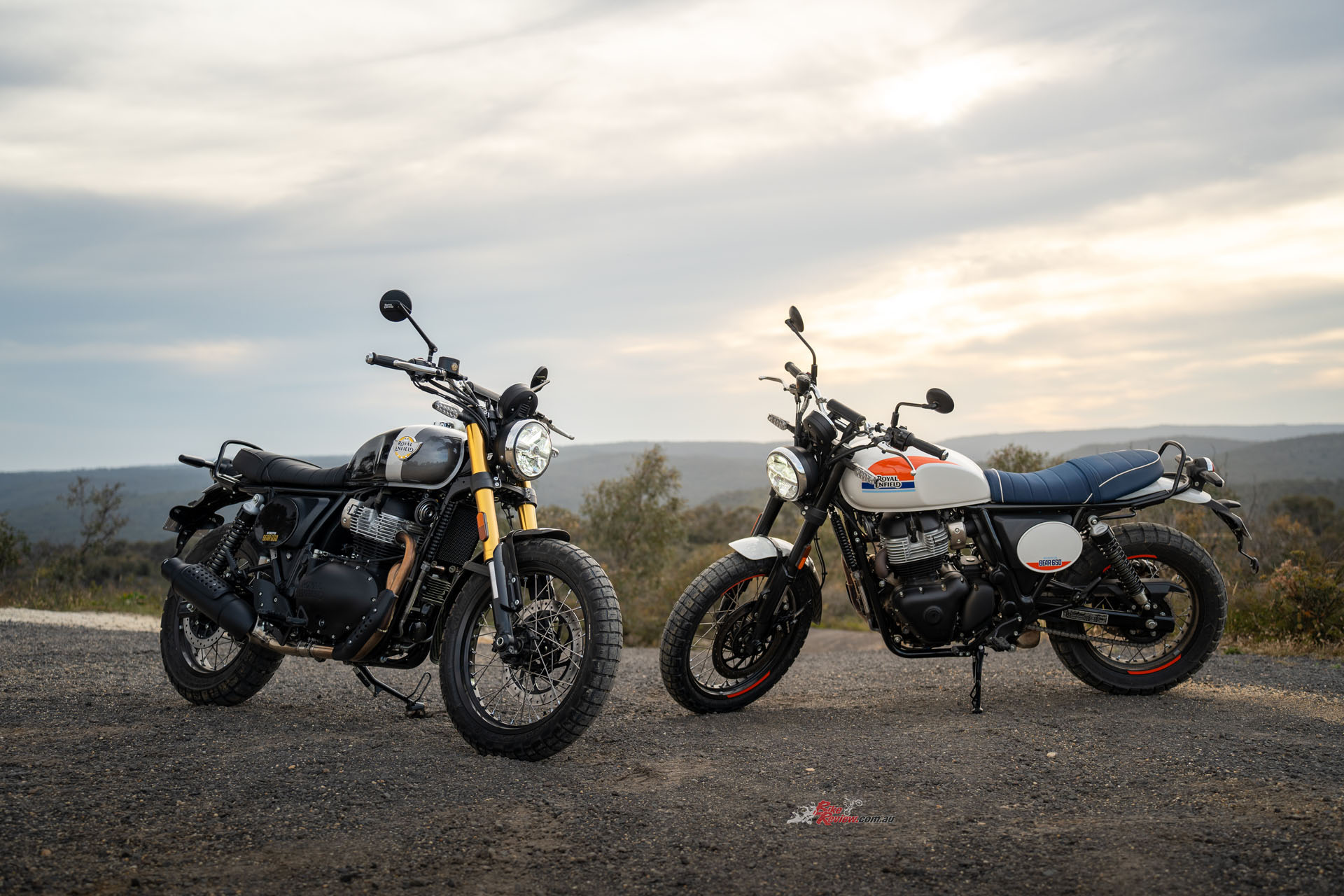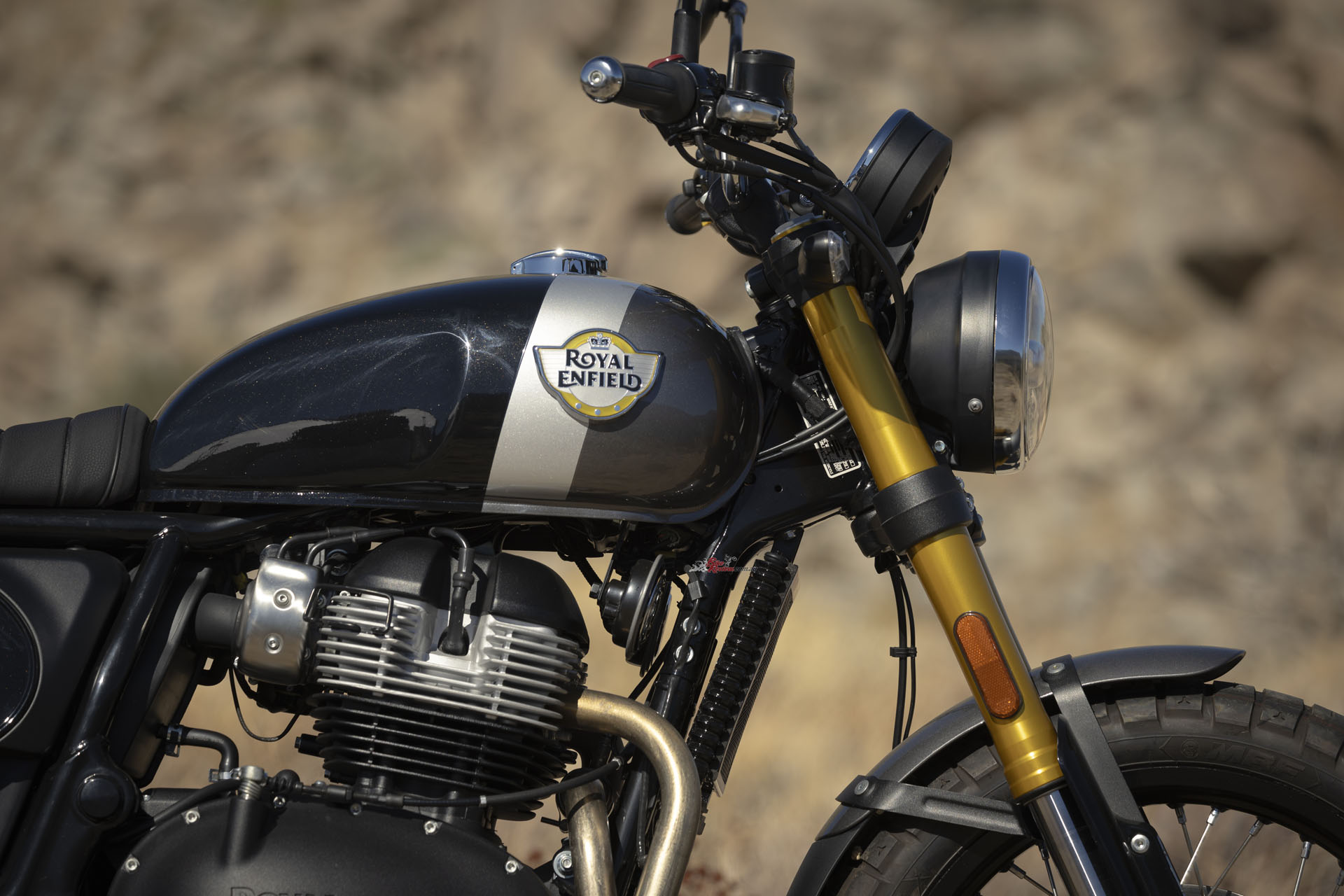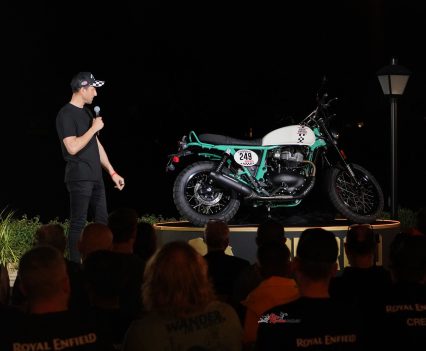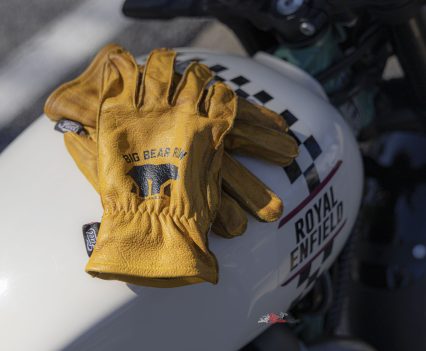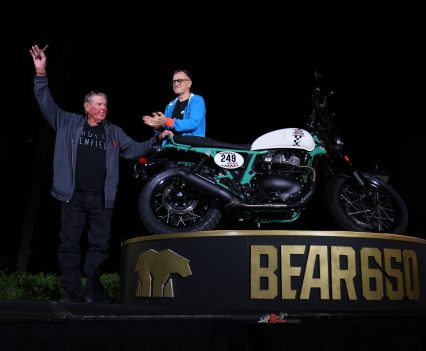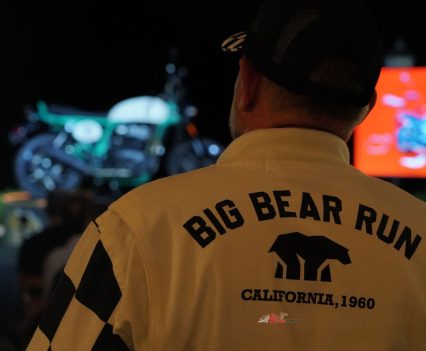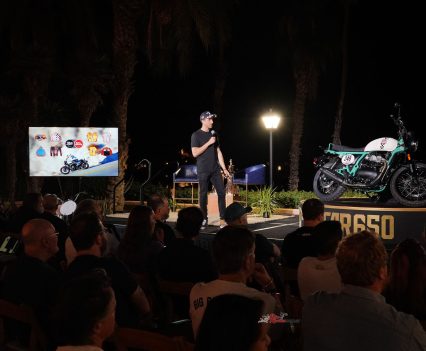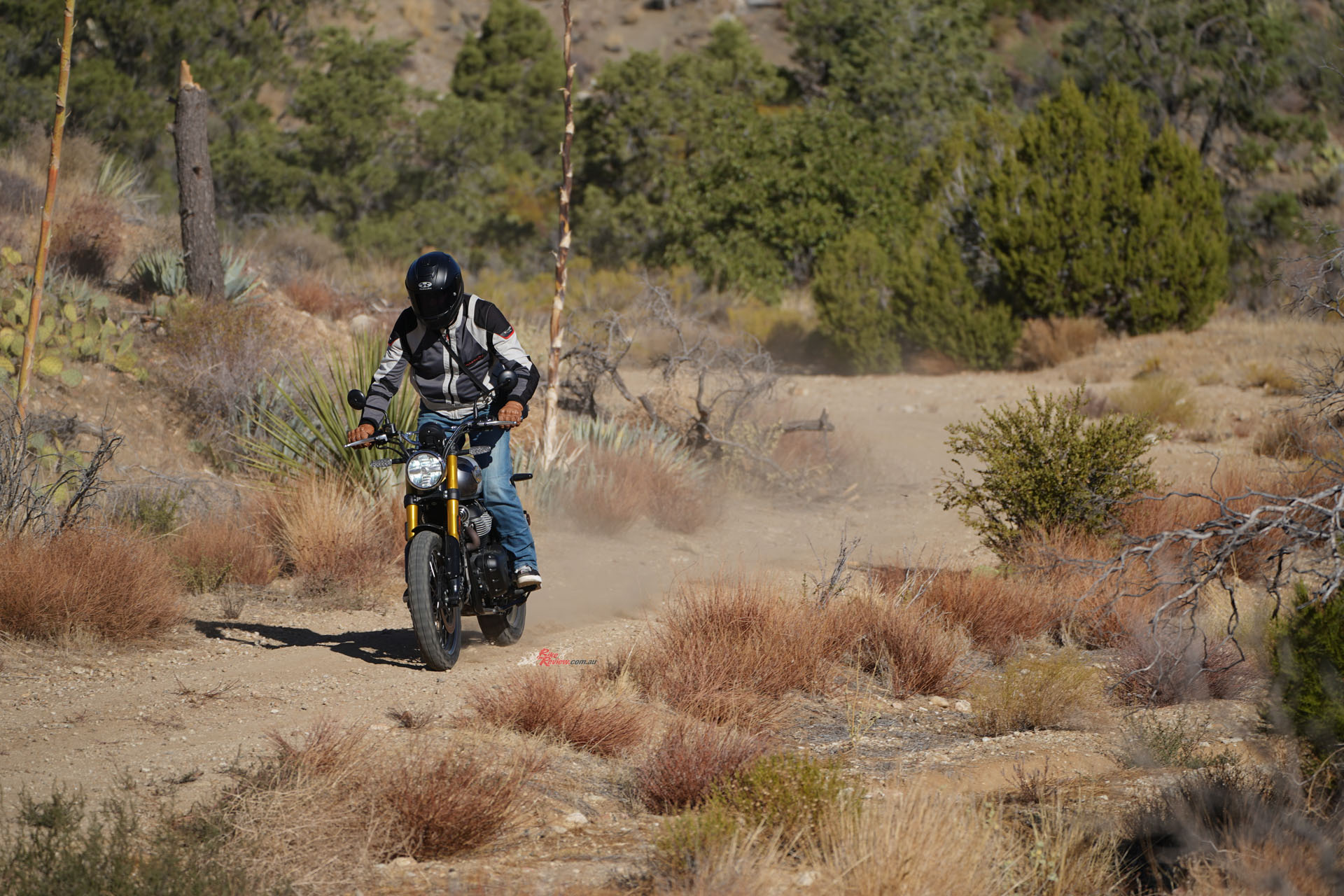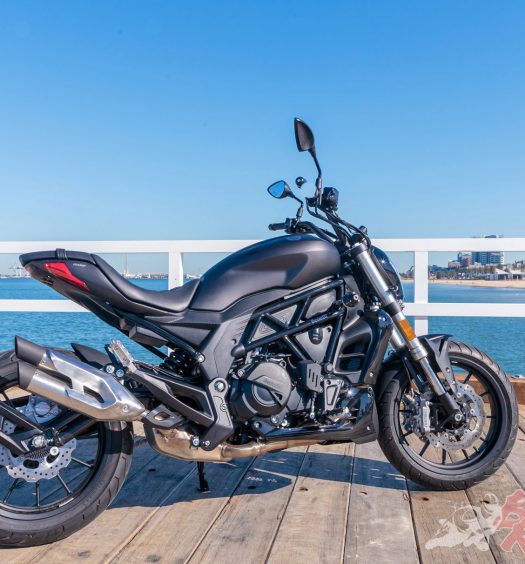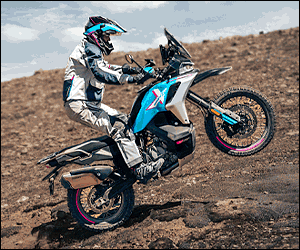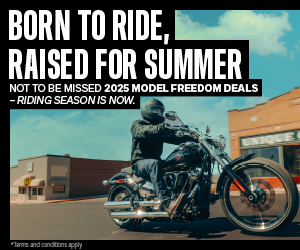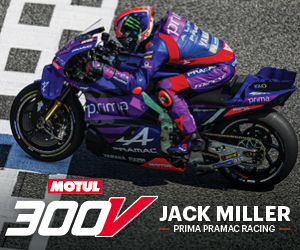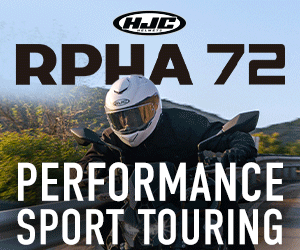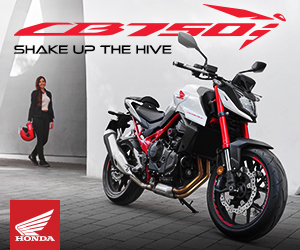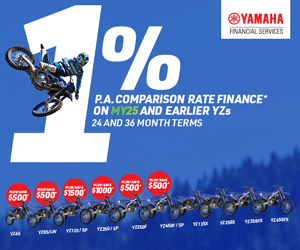Royal Enfield’s all-new INT 650 Bear brings scrambler style and versatility to the popular 650 Twins platform. We hit the hills and backroads to see how it stacks up… Photos: HMC Photography
After testing the INT Bear 650 on the smooth mountain roads of California in October, I’ve been eager to try the bike on our crappier roads to see how it rides, so I recently spent a few weeks doing just that, from Sydney’s CBD to rural roads and mountain twisties…
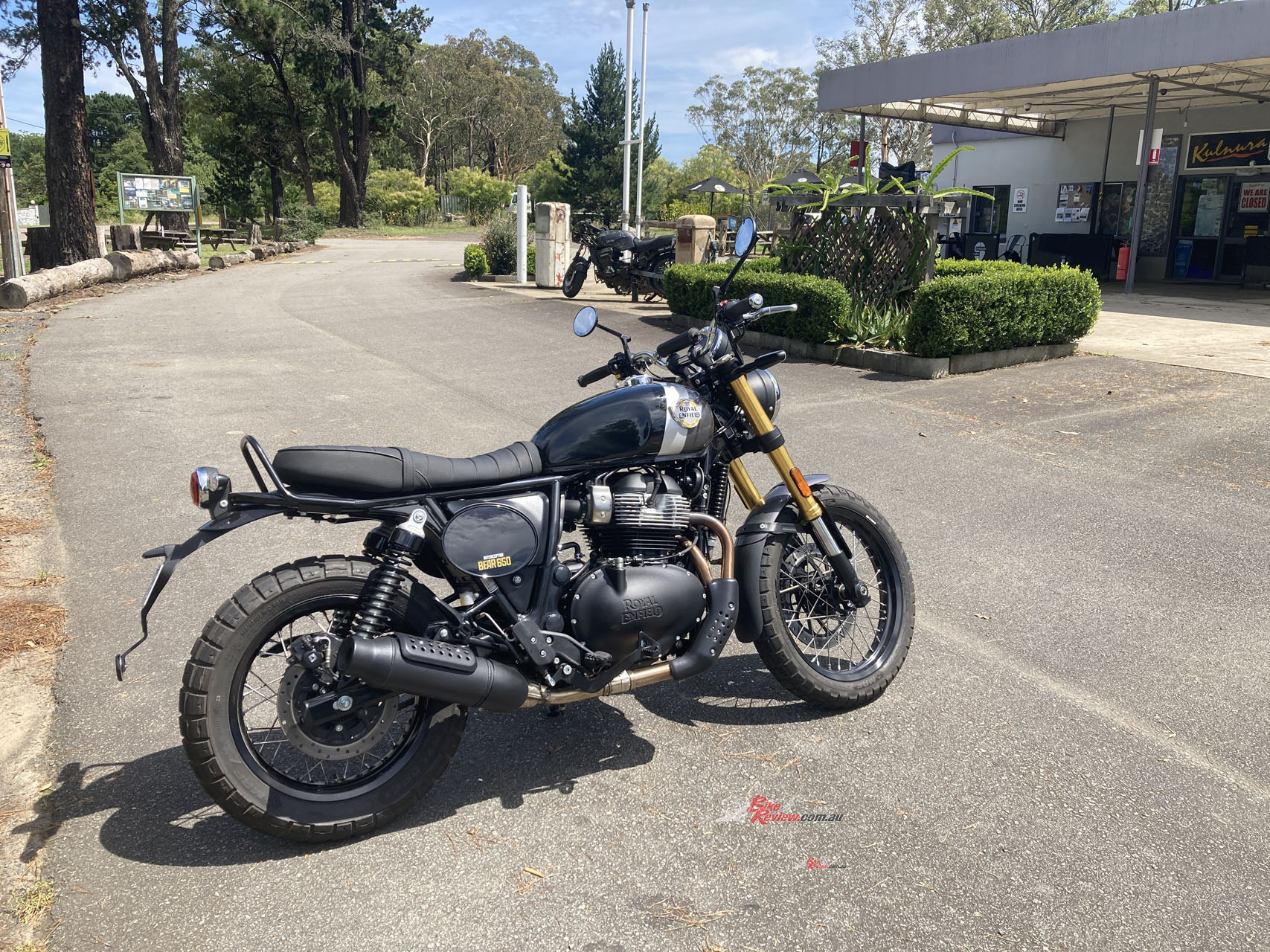
The INT Bear 650 is on sale until mid May… Not everyone wants a Himalayan 450 or a 650 roadster, so the Bear 650 blends a bit of both.
The new Royal Enfield INT Bear 650 rounds out the brand’s 650 Twins platform, bringing a scrambler-style machine to the mix. Not everyone wants a Himalayan or a 650 roadster, so the Bear 650 blends a bit of both – delivering a more rugged, go-anywhere feel while retaining that trademark Enfield charm.
The 650 twin platform kicked off with the Interceptor and Continental GT back in 2018, remember that global launch in Santa Cruz? That was a game-changer for the brand and really put Royal Enfield on the radar in the midsize segment. Since then, we’ve had the Super Meteor 650, which we tested in India and Australia, the Shotgun 650 we rode in LA and Melbourne, and we just rode the Classic 650.
The Ride
The INT 650 Bear is nimble, more so than the Interceptor or GT, even though it runs a 19-inch front wheel. It turns quickly and accurately, with a rake and trail setup that makes it feel sharper than its stablemates. SHOWA big-piston forks and revised triple-clamps add stiffness and steering precision, while a taller ride height and upgraded rear shocks improve cornering clearance and damping performance. It’s livelier than the others, but also a tiny bit more top heavy.
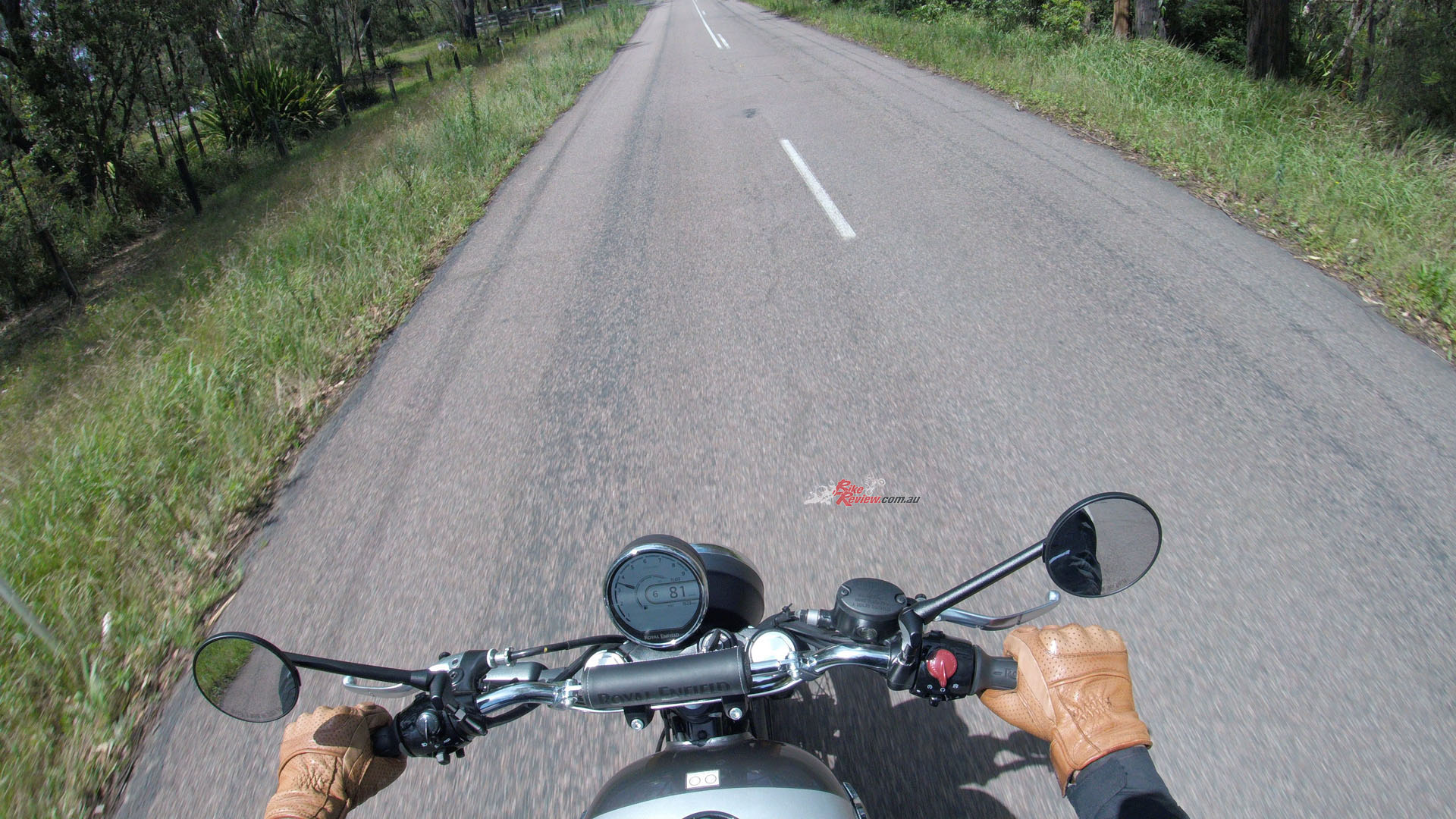
I reckon that the Bear is the best handling of the 650 Twins on the smooth stuff, but the Interceptor is better to push hard on bumpy country roads. If the Bear was slightly softer sprung, it would be great.
In fast twisty stuff around the Old Road, I found I could either flick the Bear into corners with a quick braking point and snap transition or hold big arcing lines, it liked both. Mid-corner balance is fantastic, the chassis feels stable and planted, but definitely prefers grippier smoother tarmac. Ground clearance is impressive too. I didn’t touch the footpegs once, just scraped the soles of my boots here and there.
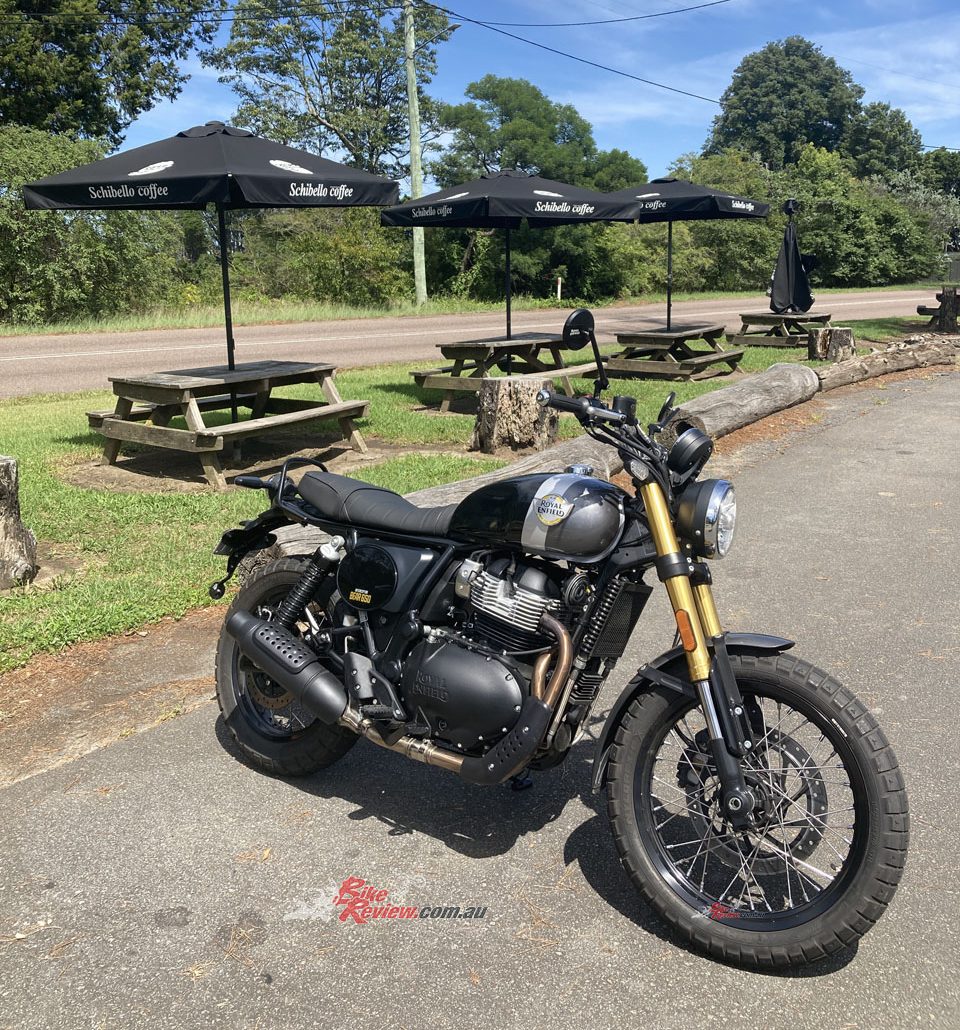
The firm shocks and the thin seat, combined with our shocker roads, make for a bit of a plank like ride after half an hour or so, something we did not pick up on in the USA.
The ergos are spot on. I’m 187cm tall and found the seat-to-peg-to-bar relationship good. If it were mine, I’d rotate the ‘bars back just 10mm for personal comfort, but otherwise, I wouldn’t touch a thing. The seat, while slim and firm, proved comfy after a full day’s riding in the USA on the smooth roads, but here in Australia, it was another story. Stick some cash aside for a custom plush seat upgrade…
 Suspension is on the firmer side as mentioned. It works great once you’re up to speed, planted and controlled through corners and over bumps, but it feels way too harsh at low speeds or on patchy urban roads. The setup feels prepped for pillion or light luggage out of the box, which fits the scrambler brief, but the trade-off is comfort.
Suspension is on the firmer side as mentioned. It works great once you’re up to speed, planted and controlled through corners and over bumps, but it feels way too harsh at low speeds or on patchy urban roads. The setup feels prepped for pillion or light luggage out of the box, which fits the scrambler brief, but the trade-off is comfort.
I personally could not live with it, I would need to go back a spring rate or two on each shock, plus add the previously mentioned seat… Up front, although the forks offer excellent support, they are also harsh over high-speed and sharp bumps, yet curiously they bottom out very easily off-road.
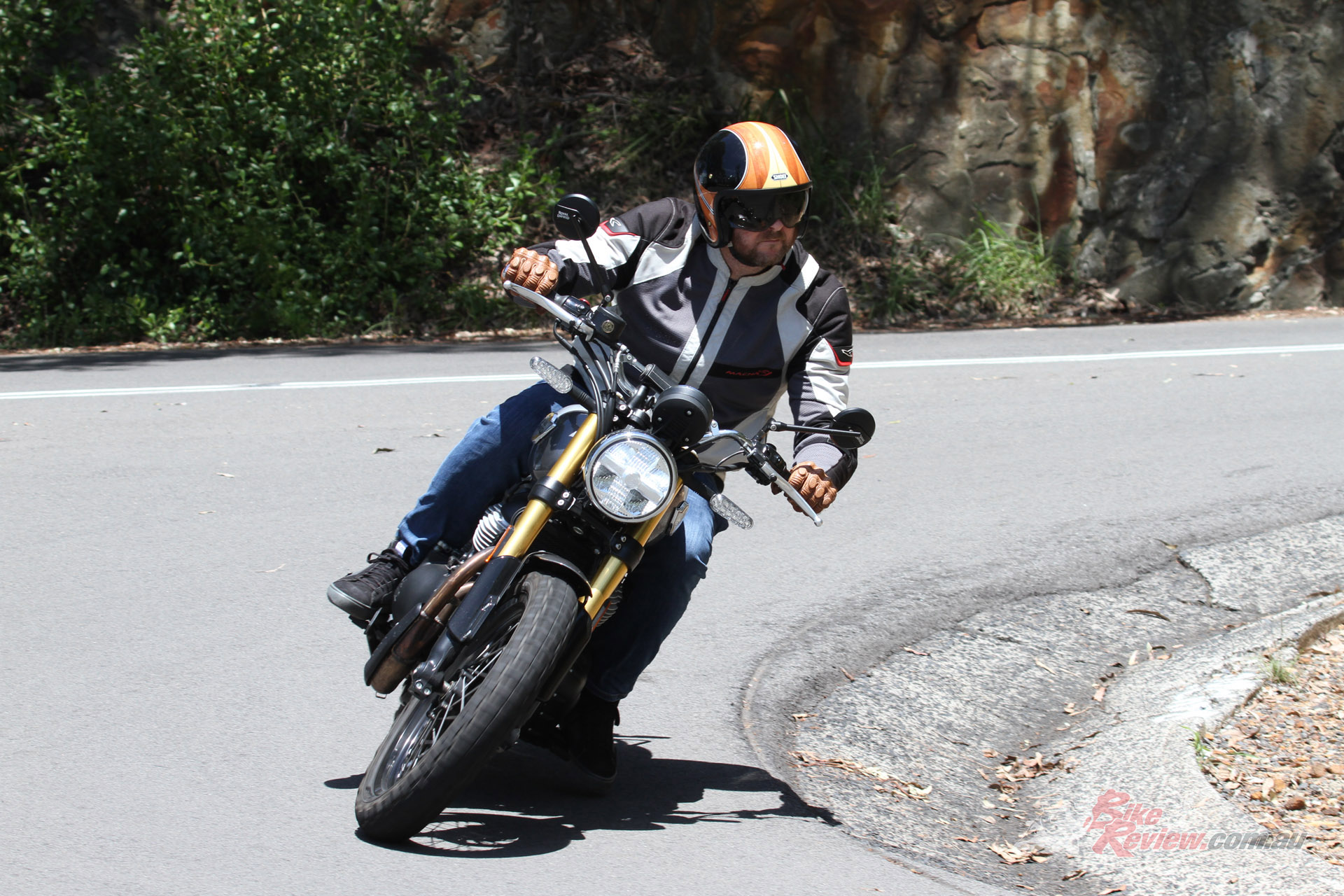
“Suspension is on the firmer side as mentioned. It works great once you’re up to speed, planted and controlled through corners and over bumps”…
Royal Enfield has made solid gains with braking performance with the Bear, but it would still benefit from a second front disc, like all of the 650 Twins would. The front gets an all-new stainless-steel disc, revised master-cylinder, and span-adjustable lever. Initial bite is strong and progressive, with enough power for committed road riding. But I still want more power, and only a second disc would solve that.
The rear brake, though off-road styled, has great modulation once you get used to the pedal position. It took me an hour or two, but it came good. It’s a great rear brake for town riding, very strong and you don’t need the front brake unless you really need to pull up quickly in the city. The ‘pegs have been moved forward slightly, and the wider clutch cover dictated the odd brake pedal shape.
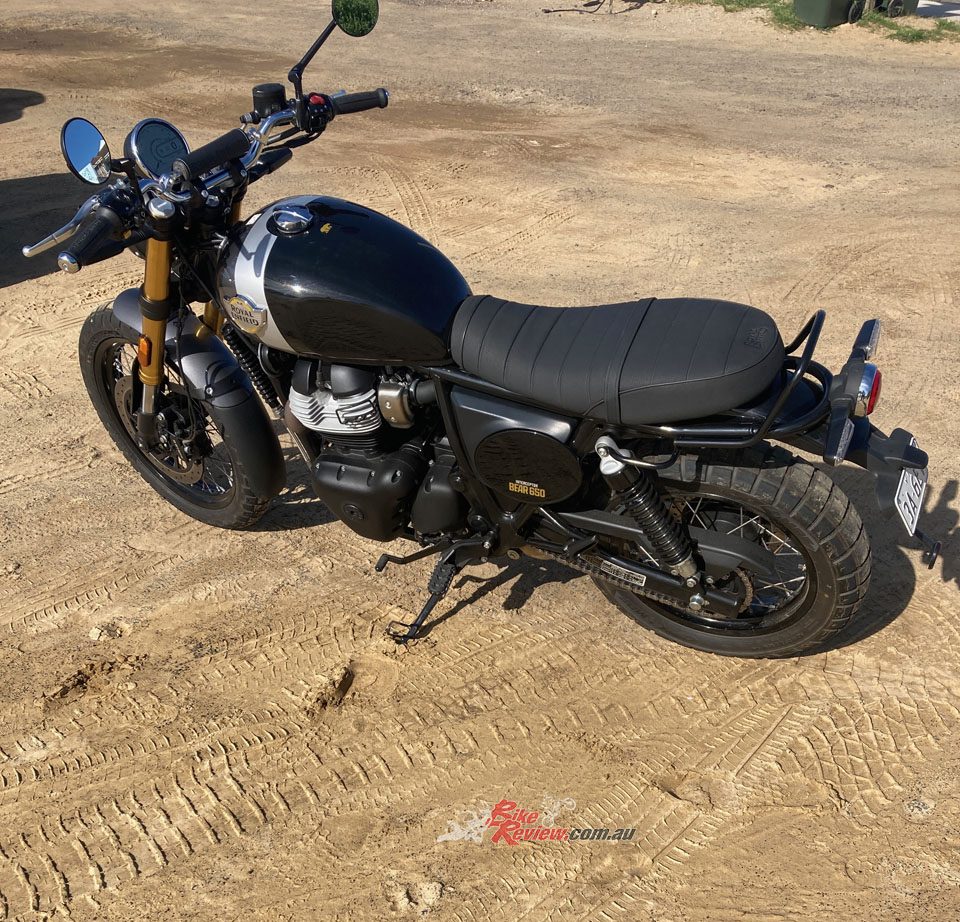
“Honestly, the MRF tyres reminded me of Metzeler Karoo’s. They feel a bit harsh on our crappy concrete motorways but aside from that, they grip amazingly well in the hills for scrambler tyres…”
As for the tyres, India-made MRFs (India’s largest tyre manufacturer for cars), they felt surprisingly good and could have been any Euro, UK or Japanese brand as far as I am concerned. Honestly, the MRF tyres reminded me of Metzeler Karoo’s. They feel a bit harsh on our crappy concrete motorways but aside from that, they grip amazingly well in the hills for scrambler tyres… and are not too bad in the dirt, either. I’d be interested to find out the price and availability here in Australia as I can’t see them for sale anywhere yet… But they are a good hoop.

“A little more punch than the Interceptor and GT, and a lot more than the heavy Shotgun, Super Meteor and Classic”…
Royal Enfield’s 648cc air/oil-cooled parallel twin is unchanged mechanically, sharing internals with the Interceptor, GT, Shotgun, Super Meteor and Classic, but now breathes through a 2-into-1 exhaust. That move allowed engineers to reposition the catalytic converter under the bike (instead of in the mufflers), centralising mass and freeing up midrange torque—up 8 per cent over its siblings. I could not feel that extra torque at all in the USA, but here I noticed it – a little more punch than the Interceptor and GT, and a lot more than the heavy Shotgun, Super Meteor and Classic. It’s a nice motor, with smooth torque and a great clutch and gearbox.
Royal Enfield’s 648cc air/oil-cooled parallel twin is unchanged mechanically, sharing internals with the Interceptor, GT, Shotgun, Super Meteor and Classic…
Despite the added torque, power remains capped at 48hp to comply with global LAMS-style regulations. That’s smart, it keeps the Bear accessible for newer riders. Mapping has been revised to suit the new airbox and pipe, and it’s seamless. Throttle response is crisp and intuitive, with carb-like smoothness from off-throttle to midrange. Gearing remains the same in terms of internal ratios, but overall gearing is tailored via sprockets to suit the 17-inch rear wheel and tyre circumference.
On the open road, I found top gear a bit tall. On days with a headwind the Bear struggled to pull sixth and 110km/h at times. A couple of extra teeth on the rear sprocket would sort that and make the most of the torque boost. Top speed is 160km/h. The Bear shares its TFT dash with the Himalayan and Shotgun, full Bluetooth connectivity, turn-by-turn nav, and a clean, legible layout. The handlebars are carried over from the Interceptor but get high-gloss switchgear. Grips are the chunky type from Royal Enfield’s cruiser range, offering great comfort and feel.
The tank is new, narrow between the knees for stand-up control and long enough for a good seating position, it is very close to the Interceptor but not exactly the same. Side panels, pillion grab rail, and rear sub-frame are all new as well, strengthened to carry luggage or gear for riders wanting to tour or camp. There’s also an under-seat tool kit, but bugger all storage as usual.
While the Bear isn’t a dirt bike, it can handle very light tracks, smooth fire trails, and dirt roads. The 19/17-inch spoked wheels and MRF rubber offer a decent contact patch, but don’t go crazy… I enjoyed it on the St Albans dirt road, a smooth 30km road in the Hunter Valley NSW, it was perfect for that type of riding, but not much more. Think of the Bear as a bike that is mainly a road bike, better than an Interceptor on gravel, but it won’t replace a Himalayan…
Royal Enfield’s 650 Bear is a brilliant evolution of the 650-Twins platform. It offers a fresh flavour in the range, delivering scrambler looks and real-world usability with genuine improvements across the board. It’s quick-turning, lively, and characterful, with enough comfort and versatility to handle daily commuting, weekend scratching, and even light touring. In Australia, it ticks a lot of our unique boxes. Good looks, good manners, and just enough off-road ability to tackle our unpredictable backroads and rural shortcuts… Go and try one if you are after a reasonably priced scrambler…
Royal Enfield INT Bear 650 – Tech Talk
Despite what some might say, the Bear 650 is far more than just an Interceptor with a few bolt-ons. Around 70 per cent of the parts are new. While it shares the core chassis, the frame has been reinforced to handle occasional off-road riding. The ‘pegs are wider and mounted slightly forward, with removable rubber inserts for off-road traction.
The rear end has been tweaked, with a kicked-up sub-frame and increased suspension travel. The dual shocks are now SHOWA units (upgraded from the Gabriel items on the Interceptor), and the swingarm is slightly longer and stronger. The rear brake setup has been revised too, with a larger disc, new caliper and master-cylinder ratio to improve off-road control.
The Bear 650 rolls on spoked wheels – a 17-inch rear and a 19-inch front – shod in MRF tyres made in India. Up front, big piston SHOWA forks offer more travel and better control. The front brake uses a new stainless-steel disc, with an upgraded master-cylinder and span-adjustable lever.
Tech-wise, the Bear features a full-colour TFT dash shared with the Shotgun 650 and Himalayan, offering Bluetooth connectivity and turn-by-turn navigation via the Tripper app. The handlebar controls have been upgraded too, with gloss-finish switchgear and chunkier grips borrowed from the Super Meteor and Shotgun models.
The tank new design – narrower between the knees to suit a standing riding position – with revised side covers and a handy toolkit compartment. There’s also a strong pillion grabrail and reinforced sub-frame to carry luggage or camping gear, as Enfield expects Bear owners to venture a bit further off the beaten track.
One of the most significant changes is the two-into-one exhaust system, which relocates the catalytic converters centrally under the bike and helps unlock an 8 per cent increase in midrange torque. The Bear still makes the same 48hp to comply with global LAMS and learner laws. Aside from the exhaust and airbox tweaks, the engine is the same 648cc parallel twin used in the Interceptor, Continental GT, Super Meteor, Shotgun and Classic 650 models, with revised fuel and ignition mapping.
As for the name? The Bear 650 pays tribute to the iconic Big Bear Run – a legendary off-road race from the 1960s that was won by Eddie Mulder on a Royal Enfield.
2025 Royal Enfield Bear 650 Specifications
Price: From $11,490 R/A
Warranty: 3 year factory warranty & 3 year roadside assistance
Colours: Boardwalk White, Petrol Green, Wild Honey, Golden Shadow, Two Four Nine
Claimed power: 35kW [47hp]@7150rpm
Claimed torque: 56.5Nm [38ft-lbs]@5150rpm
Weight: 214kg wet
Fuel capacity: 13.7L
Fuel Consumption Claimed: 22km/L
Fuel Consumption (measured): N/A
Engine: SOHC air and oil-cooled 648cc parallel twin four-stroke, eight-valve, 78mm x 67.8mm bore x stroke, 9.5:1 compression, 270º firing order crankshaft, Bosch EMS/EFI
Gearbox: Six-speed constant mesh Clutch: Wet multi-plate slipper clutch, cable actuation
Frame: Steel tubular spine frame
Rake: N/A Trail: N/A
Suspension: 43mm Upside Down SHOWA BPSF forks, 130mm travel, non-adjustable, twin SHOWA Shocks, 115mm travel, preload adjustable.
Brakes: 320mm disc, twin piston floating caliper (f), ABS, two-piston, 270mm rotor, twin piston floating caliper (r) Wheels: tube type spoked alloy. Tyres: 100/90 – 19 MRF (f) 140/80 – 17 MRF (r)
Dimensions:
Wheelbase: 1460mm
Seat height: N/A
Ground clearance: 184mm
Overall width: 855mm
Overall Length: 2216mm
Overall height: 1160mm
Instruments & electronics: TFT dash, tacho, speedo, dual trip, warning lights/fuel.
Electronics: Bosch Two-Channel ABS, Bosch EMS, USB point, LED headlight, LED taillight
Editor’s Note: If you are reading this article on any website other than BikeReview.com.au, please report it to BikeReview via our contact page, as it has been stolen or re-published without authority.
Ratings | Bike Review | 2025 Royal Enfield INT BEAR 650, Aussie Road Test


